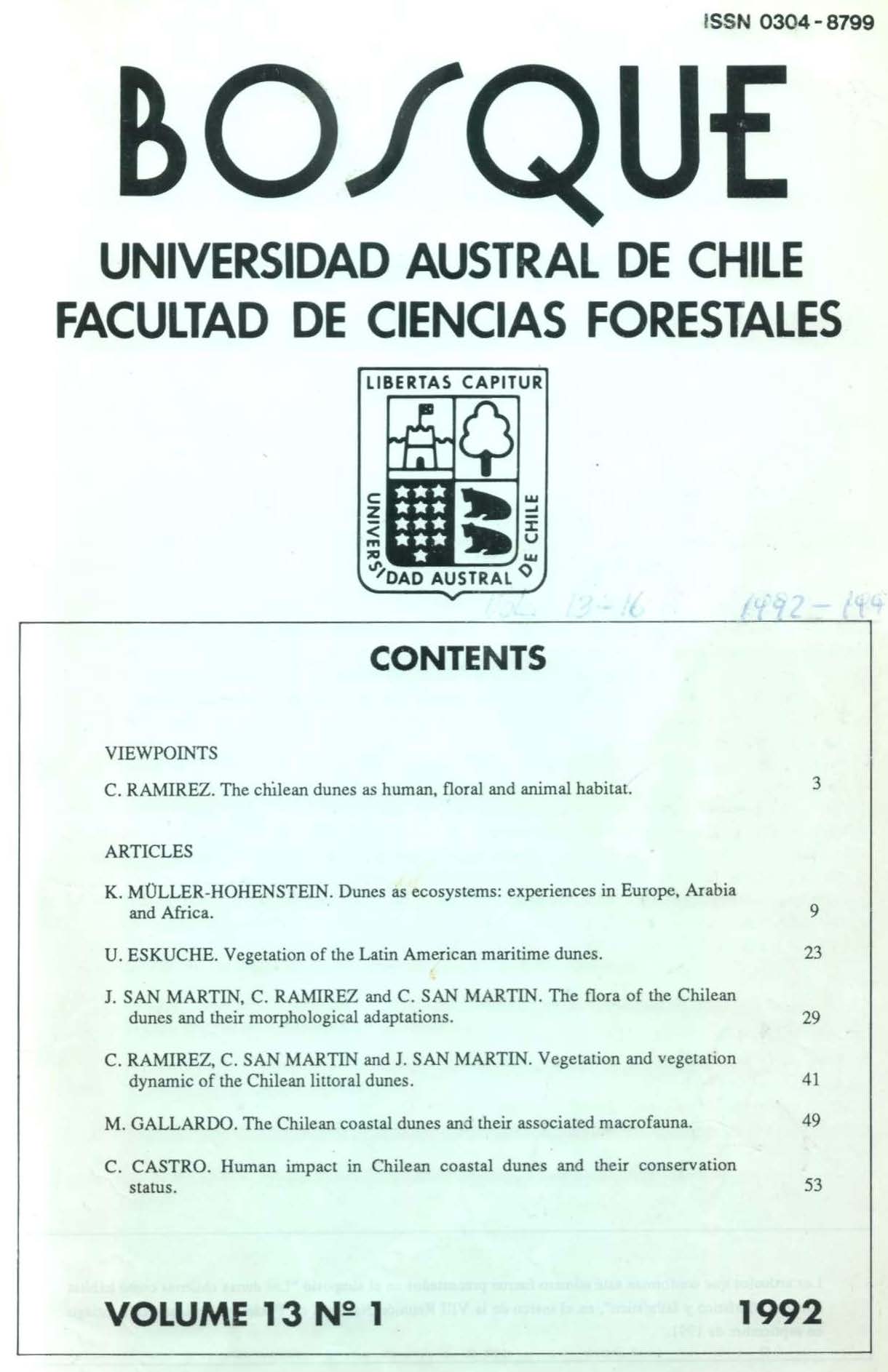The flora of the Chilean dunes an their morphological adaptations
Main Article Content
Abstract
A flora which is poor in species and coverage and which is physionomically uniform develops in the dunes of the Chilean littoral in response to extreme conditions. The sand substrate of the dunes is dry, with a low field capacity, poor in nutrients, unstable and with a tendency to become overheated in summer. Thus, plants that colonize the dunes have a psamophylic, halophylic and xerophylic character. The flora of the dunes of the central littoral in Chile are analyzed (Valparaíso-Puerto Montt); their biological spectrum standing out as an adaptation to the environment. The flora of the littoral dunes of central Chile is composed of 186 species, of which 124 (66.7%) are native plants and 62 (33.3%) are introduced. Most of them have a wide latitudinal distribution, establishing floristic relationships with the coastal dunes of North America. The alochthonous elements correspond mainly to the Poaceae, Asteraceae and Cichoriaceae families. This flora is represented in the biological spectrum by all the life forms, with a predominance of terophytes and hemicryptophytes with 71 and 44 species respectively. The first forms indicate conditions of draught. The geophytes reach 8% of the total with 15 species. Intermediate positions show camephytes and phanerophytes with 26 and 24 species respectively. Chamephytes present an increase from north to south, with the corresponding decrease of geophytes and terophytes which can be associated to changes in the microclimate. Because of their capacity to tolerate erosion and accretion changes of the soil, chamephytes and hemicryptophytes help to estabilize the dunes.

